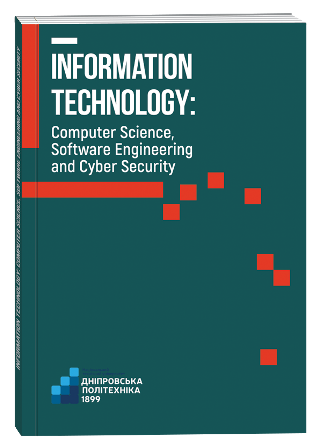ALGORITHMS FOR PROCEDURAL GENERATION OF GAME CONTENT USING GRAPHS
DOI:
https://doi.org/10.32782/IT/2024-3-8Keywords:
procedural generation, game development, development efficiency, development optimizationAbstract
Developing unique gaming environments using algorithms based on graph data structures and procedural content generation can significantly reduce costs while increasing overall team productivity and eliminating the risk of stagnation in the development process. The purpose of this research is to analyze, develop and visualize the operation of procedural content generation algorithms, as well as to study the prospects for their further use in the practical development of game projects. The scientific novelty is to use graphs for procedural generation of game content. This topic was chosen due to the fact that creating a game environment can be one of the main and most resource-intensive costs in the game production process. Procedural content generation can reduce these costs and speed up the development process. In fact, it is almost impossible to calculate what specific part of the team’s productivity and business benefits procedural generation brings, since most discoveries in this area are a trade secret of most game studios, however, this only speaks of the opportunities and benefits that this approach brings. The methodology is based on The Python programming language as the main tool for studying algorithms, which was used to develop algorithms, create visualizations and examples of web servers for processing data generated by graphs. Conclusion: during development, differences and commonalities in the details of the implementation of algorithms, as well as the results of content generation, were studied. Differences in the generated graphs were also demonstrated. Examples of web servers illustrate the potential for further practical application of the developed algorithms. The results of the study can be used by developers of gaming environments and algorithms researchers to improve the efficiency of production processes.
References
Xia F., Liu J., Nie H., Fu Y., Wan L. and Kong X. «Random Walks: A Review of Algorithms and Applications» in IEEE Transactions on Emerging Topics in Computational Intelligence, April 2020, Volume 4, No. 2, pp. 95–107, doi: 10.1109/TETCI.2019.2952908.
Fan X., Li B., Sisson S. The binary space partitioning-tree process. International Conference on Artificial Intelligence and Statistics, March 2018, PMLR, pp. 1859–1867.
Ehrhardt G. The not-so-random Drunkard’s walk, Journal of Statistics Education, 2013, vol. 21, no. 2, doi: 10.1080/10691898.2013.11889679.
Hendrikx M., Meijer S., Van Der Velden, J., Iosup A. Procedural content generation for games: а survey, ACM Transactions on Multimedia Computing, Communications, and Applications (TOMM), 2013, vol. 9, no. 1, p. 1–22.
Koesnaedi A., Istiono W. Implementation drunkard’s walk algorithm to generate random level in roguelike games. International Journal of Multidisciplinary Research and Publications, 2022, vol. 5, no. 2, р. 97–103.
Shaker N., Togelius J., Nelson M. J. Procedural content generation in games, 2016.
Togelius J., Kastbjerg E., Schedl D., Yannakakis G. N. What is procedural content generation? Mario on the borderline. Proceedings of the 2nd international workshop on procedural content generation in games, June 2011, pp. 1–6.
Сóth C. D. Binary space partitions: recent developments. Combinatorial and Computational Geometry, 2005, vol. 52, р. 525–552.
Van Der Linden R., Lopes R., Bidarra R. Procedural generation of dungeons. IEEE Transactions on Computational Intelligence and AI in Games, 2013, vol. 6, no. 1, p. 78–89.







